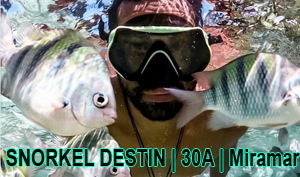Post Views: 121

THE SOUTH WALTON COMMUNITY COUNCIL SENDS THIS UPDATE ON THE OIL RECOVERY EFFORTS ….
SWCC has regularly attended both local and regional meetings with the agencies to keep updated on the recovery efforts for the oil impacts in Walton County and other areas. We have had a lot of communication with the agencies and other organizations and will soon be updating our website to keep you current on testing results and other information pertaining to our area. In the meantime, here is some information on what is happening on the beaches.
1. Locating sub-surface oil deposits. If you walked the beach this weekend to the west of the Ed Walline Beach Access, you saw some auger equipment being used to drill into the sand. There are also workers with shovels digging further depending on what the augur’s hole reveals. Here is what is going on. While cleaning the beaches since the spill, some areas of submerged oil have been discovered under the sand. (see photo below) Up until now, the focus of the BP shoreline response teams (SRT) has been to remove visible oil, mainly in the form of tar, from the beach. The SRT will continue that task. The concentration of workers has been in the Dune Allen/Topsail area as that is the portion of the beach that has been more heavily and regularly subjected to fresh tar moving on shore with the winter storms. You may have also seen the BP teams in other areas as reports of tar are reported.
BP has now begun a new phase in the beach cleanup effort, that is, a systematic grid search for any remaining pockets or areas of oil under the sand. That is what is happening now. I watched one “hit” Saturday morning. The cache of hardened oil was removed with shovels and the hole covered over. Within the next few days, this particular crew will be working their way west.
2. Water/Sediment Testing. FDEP has done some water and sediment sampling. With a few exceptions, there have not been any “hits” in our area. The sampling will be escalated according to a recent FDEP email. The email states the Florida Department of Environmental Protection “is initiating weekly beach monitoring this week for polynuclear aromatic hydrocarbons (PAHs) and DOSS in water samples in preparation for this year’s swim season”. DOSS is one of the ingredients of the dispersant, Corexit. FDEP will also be performing targeted beach sand sampling in “areas of special concern”. FDEP has mapped areas of Walton County for sediment sampling. The email explains, “Our sampling is being used to help the Department of Health (DOH) craft protective public health messages or notices. We will be collecting tarballs and sand (from both visibly clean and visibly stained) portions of beaches to determine how the weathering of the oil may have affected its composition, people’s ability to detect it on the beach and their potential for unacceptable exposure. Any public health messaging related to this sampling would come from DOH or the county health units. We are hopeful that the public health message will remain the same. Beachgoers should not recreate in areas with oil product too numerous to avoid. By avoiding visible oil, it is unlikely that you will be exposed to unsafe levels of petroleum”.
(Photo provided by Surfrider Foundation of the Emerald Coast)
If you see oil on the beach, in the form of tar, mousse, or whatever, the state and federal agencies are asking that it be called into a
new number. That number is:
At the same time as FDEP is increasing its testing to ensure beach user safety, the Natural Resource Damage Assessment is going on also. This is the state claims process for ecological damages.
We will keep you updated as the various recovery processes continue.
Oil Tar Balls Found On Santa Rosa Beach
 THE SOUTH WALTON COMMUNITY COUNCIL SENDS THIS UPDATE ON THE OIL RECOVERY EFFORTS ….
SWCC has regularly attended both local and regional meetings with the agencies to keep updated on the recovery efforts for the oil impacts in Walton County and other areas. We have had a lot of communication with the agencies and other organizations and will soon be updating our website to keep you current on testing results and other information pertaining to our area. In the meantime, here is some information on what is happening on the beaches.
1. Locating sub-surface oil deposits. If you walked the beach this weekend to the west of the Ed Walline Beach Access, you saw some auger equipment being used to drill into the sand. There are also workers with shovels digging further depending on what the augur’s hole reveals. Here is what is going on. While cleaning the beaches since the spill, some areas of submerged oil have been discovered under the sand. (see photo below) Up until now, the focus of the BP shoreline response teams (SRT) has been to remove visible oil, mainly in the form of tar, from the beach. The SRT will continue that task. The concentration of workers has been in the Dune Allen/Topsail area as that is the portion of the beach that has been more heavily and regularly subjected to fresh tar moving on shore with the winter storms. You may have also seen the BP teams in other areas as reports of tar are reported.
BP has now begun a new phase in the beach cleanup effort, that is, a systematic grid search for any remaining pockets or areas of oil under the sand. That is what is happening now. I watched one “hit” Saturday morning. The cache of hardened oil was removed with shovels and the hole covered over. Within the next few days, this particular crew will be working their way west.
2. Water/Sediment Testing. FDEP has done some water and sediment sampling. With a few exceptions, there have not been any “hits” in our area. The sampling will be escalated according to a recent FDEP email. The email states the Florida Department of Environmental Protection “is initiating weekly beach monitoring this week for polynuclear aromatic hydrocarbons (PAHs) and DOSS in water samples in preparation for this year’s swim season”. DOSS is one of the ingredients of the dispersant, Corexit. FDEP will also be performing targeted beach sand sampling in “areas of special concern”. FDEP has mapped areas of Walton County for sediment sampling. The email explains, “Our sampling is being used to help the Department of Health (DOH) craft protective public health messages or notices. We will be collecting tarballs and sand (from both visibly clean and visibly stained) portions of beaches to determine how the weathering of the oil may have affected its composition, people’s ability to detect it on the beach and their potential for unacceptable exposure. Any public health messaging related to this sampling would come from DOH or the county health units. We are hopeful that the public health message will remain the same. Beachgoers should not recreate in areas with oil product too numerous to avoid. By avoiding visible oil, it is unlikely that you will be exposed to unsafe levels of petroleum”.
(Photo provided by Surfrider Foundation of the Emerald Coast)
If you see oil on the beach, in the form of tar, mousse, or whatever, the state and federal agencies are asking that it be called into a new number. That number is:
THE SOUTH WALTON COMMUNITY COUNCIL SENDS THIS UPDATE ON THE OIL RECOVERY EFFORTS ….
SWCC has regularly attended both local and regional meetings with the agencies to keep updated on the recovery efforts for the oil impacts in Walton County and other areas. We have had a lot of communication with the agencies and other organizations and will soon be updating our website to keep you current on testing results and other information pertaining to our area. In the meantime, here is some information on what is happening on the beaches.
1. Locating sub-surface oil deposits. If you walked the beach this weekend to the west of the Ed Walline Beach Access, you saw some auger equipment being used to drill into the sand. There are also workers with shovels digging further depending on what the augur’s hole reveals. Here is what is going on. While cleaning the beaches since the spill, some areas of submerged oil have been discovered under the sand. (see photo below) Up until now, the focus of the BP shoreline response teams (SRT) has been to remove visible oil, mainly in the form of tar, from the beach. The SRT will continue that task. The concentration of workers has been in the Dune Allen/Topsail area as that is the portion of the beach that has been more heavily and regularly subjected to fresh tar moving on shore with the winter storms. You may have also seen the BP teams in other areas as reports of tar are reported.
BP has now begun a new phase in the beach cleanup effort, that is, a systematic grid search for any remaining pockets or areas of oil under the sand. That is what is happening now. I watched one “hit” Saturday morning. The cache of hardened oil was removed with shovels and the hole covered over. Within the next few days, this particular crew will be working their way west.
2. Water/Sediment Testing. FDEP has done some water and sediment sampling. With a few exceptions, there have not been any “hits” in our area. The sampling will be escalated according to a recent FDEP email. The email states the Florida Department of Environmental Protection “is initiating weekly beach monitoring this week for polynuclear aromatic hydrocarbons (PAHs) and DOSS in water samples in preparation for this year’s swim season”. DOSS is one of the ingredients of the dispersant, Corexit. FDEP will also be performing targeted beach sand sampling in “areas of special concern”. FDEP has mapped areas of Walton County for sediment sampling. The email explains, “Our sampling is being used to help the Department of Health (DOH) craft protective public health messages or notices. We will be collecting tarballs and sand (from both visibly clean and visibly stained) portions of beaches to determine how the weathering of the oil may have affected its composition, people’s ability to detect it on the beach and their potential for unacceptable exposure. Any public health messaging related to this sampling would come from DOH or the county health units. We are hopeful that the public health message will remain the same. Beachgoers should not recreate in areas with oil product too numerous to avoid. By avoiding visible oil, it is unlikely that you will be exposed to unsafe levels of petroleum”.
(Photo provided by Surfrider Foundation of the Emerald Coast)
If you see oil on the beach, in the form of tar, mousse, or whatever, the state and federal agencies are asking that it be called into a new number. That number is:



















